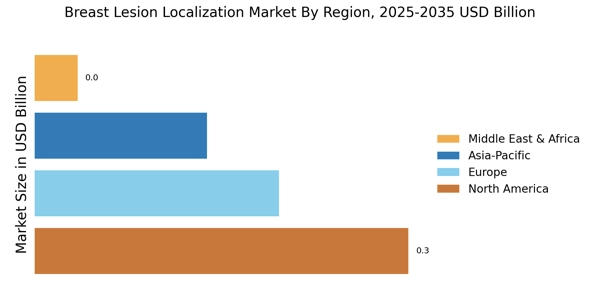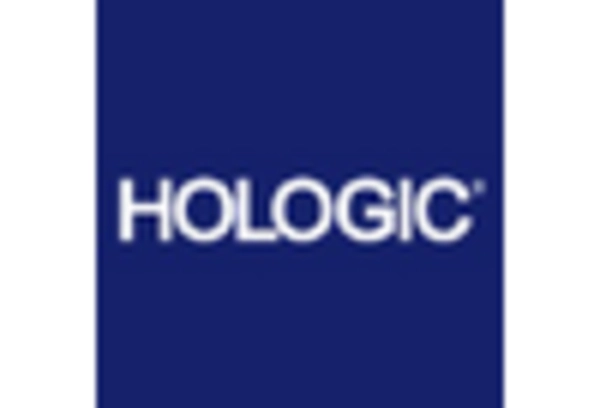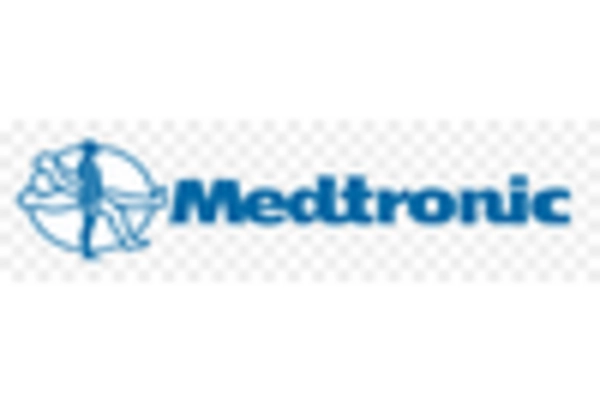Government Initiatives and Funding
Government initiatives and funding play a pivotal role in shaping the Breast Lesion Localization Market. Various health authorities are increasingly recognizing the importance of breast cancer screening and localization technologies, leading to enhanced funding for research and development. These initiatives aim to improve diagnostic capabilities and treatment options, ultimately benefiting patient care. Additionally, government-sponsored programs that promote awareness and access to screening services are likely to stimulate market growth. As funding for breast cancer research continues to rise, the Breast Lesion Localization Market is expected to expand, driven by innovations that emerge from these investments.
Increasing Incidence of Breast Cancer
The rising incidence of breast cancer is a critical driver for the Breast Lesion Localization Market. According to recent statistics, breast cancer remains one of the most prevalent cancers among women, with millions diagnosed annually. This alarming trend necessitates effective localization techniques to ensure accurate diagnosis and treatment. As healthcare systems strive to improve patient outcomes, the demand for advanced localization methods is expected to surge. The increasing number of breast cancer cases is likely to propel investments in research and development, further enhancing the market landscape. Consequently, the Breast Lesion Localization Market is anticipated to witness substantial growth as healthcare providers seek innovative solutions to address this pressing health issue.
Rising Awareness and Screening Programs
The Breast Lesion Localization Market is benefiting from heightened awareness regarding breast health and the importance of early detection. Public health campaigns and educational initiatives have significantly increased the number of women participating in regular screening programs. This trend is crucial, as early detection of breast lesions can lead to better treatment outcomes. As more women undergo routine screenings, the demand for effective localization techniques is likely to rise. Furthermore, the implementation of national screening guidelines is expected to bolster market growth. The increased focus on preventive healthcare is anticipated to drive the Breast Lesion Localization Market, as healthcare providers seek to adopt advanced technologies to meet the growing demand.
Shift Towards Minimally Invasive Procedures
The Breast Lesion Localization Market is witnessing a shift towards minimally invasive procedures, which are preferred by both patients and healthcare providers. Techniques such as wire localization and radioactive seed localization are gaining traction due to their reduced recovery times and lower complication rates. This trend aligns with the broader movement in healthcare towards less invasive treatment options, which are often associated with improved patient satisfaction. As surgical techniques evolve, the demand for effective localization methods that facilitate these procedures is likely to increase. The market for minimally invasive breast surgery is projected to grow significantly, further driving the Breast Lesion Localization Market as healthcare providers adapt to changing patient preferences.
Technological Advancements in Imaging Techniques
The Breast Lesion Localization Market is experiencing a notable transformation due to advancements in imaging technologies. Innovations such as 3D mammography, MRI, and ultrasound have enhanced the accuracy of breast lesion detection and localization. These technologies allow for better visualization of lesions, which is crucial for effective treatment planning. The integration of artificial intelligence in imaging is also emerging, potentially improving diagnostic precision. As a result, healthcare providers are increasingly adopting these advanced imaging modalities, which is likely to drive market growth. The market for breast imaging technologies is projected to reach USD 3.5 billion by 2026, indicating a robust demand for improved localization techniques.


















Leave a Comment